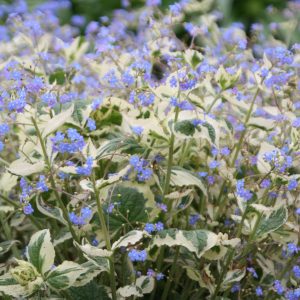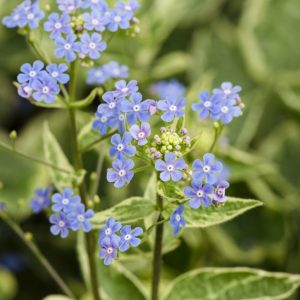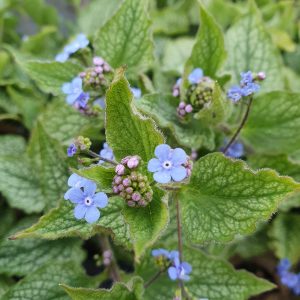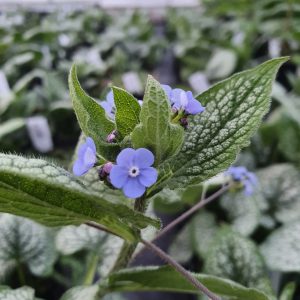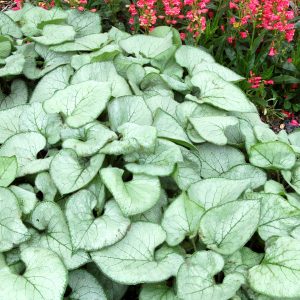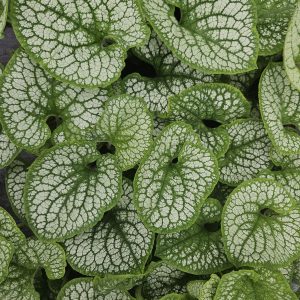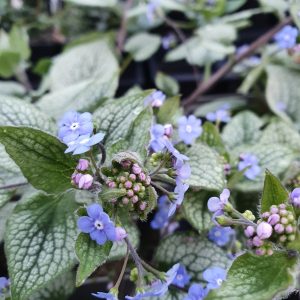Brunnera, also known as Siberian Bugloss or False Forget-Me-Not, is an enchanting perennial appreciated for its heart-shaped foliage and delicate blue flowers. To ensure the successful establishment and flourishing of your Brunnera plants, follow this comprehensive planting guide.
Selecting the Planting Site
Sunlight Requirements: Choose a location with partial to full shade. Brunnera thrives in dappled sunlight or shaded areas.
Soil Conditions: Plant in well-draining, humus-rich soil with a slightly acidic to neutral pH. Ensure the soil retains moisture without becoming waterlogged.
Planting Time
Optimal Timing: Plant Brunnera in early spring or early Autumn. These seasons provide moderate temperatures and allow the plants to establish well before extreme weather conditions.
Planting Process
Prepare the Soil: Work the soil to a depth of 12 inches, incorporating organic matter such as compost for enhanced fertility.
Spacing: Plant Brunnera about 12 to 18 inches apart, depending on the variety. This allows for proper air circulation and prevents overcrowding.
Plant Depth: Set the plants at the same depth they were in the nursery containers. Water thoroughly after planting.
Watering
Establishment Period: Water regularly during the first growing season to help the plants establish strong root systems.
Consistent Moisture: Brunnera appreciates consistent moisture. Keep the soil consistently moist, especially during dry periods.
Mulching
Organic Mulch: Apply a 2-3 inch layer of organic mulch around the plants to retain soil moisture, suppress weeds, and provide insulation.
Fertilisation
Balanced Fertiliser: Before the growing season, apply a balanced, slow-release fertiliser according to package instructions to support healthy growth.
Support
Generally Unnecessary: Brunnera is a low-maintenance plant that typically doesn’t require staking or additional support.
Pruning
Spring Clean-up: In early spring, remove any damaged or withered foliage to encourage new growth.
Pest and Disease Management
Good Air Circulation: Proper spacing between plants promotes good air circulation, reducing the risk of fungal diseases.
Monitor for Pests: Keep an eye out for pests such as slugs and snails, especially in shaded areas. Use appropriate methods to control them.
Winter Care
Cold Hardy: Brunnera is generally cold-hardy. Mulch lightly in late Autumn to provide some protection in harsh winter climates.
Avoid Waterlogging: Ensure the soil drains well during winter to prevent waterlogging, which can lead to root rot.
Division
Periodic Division: Every 3-4 years, consider dividing mature Brunnera clumps to rejuvenate the plants. This is best done in early spring.
Adaptation
Monitor and Adjust: Regularly monitor the overall health of your Brunnera. Adjust care practices based on the specific growing conditions in your garden.
By following this guide, you’ll establish a thriving Brunnera garden, featuring lush foliage and delicate flowers. Adapt these recommendations based on your specific growing conditions and enjoy the enduring beauty that Brunnera brings to your landscape.



